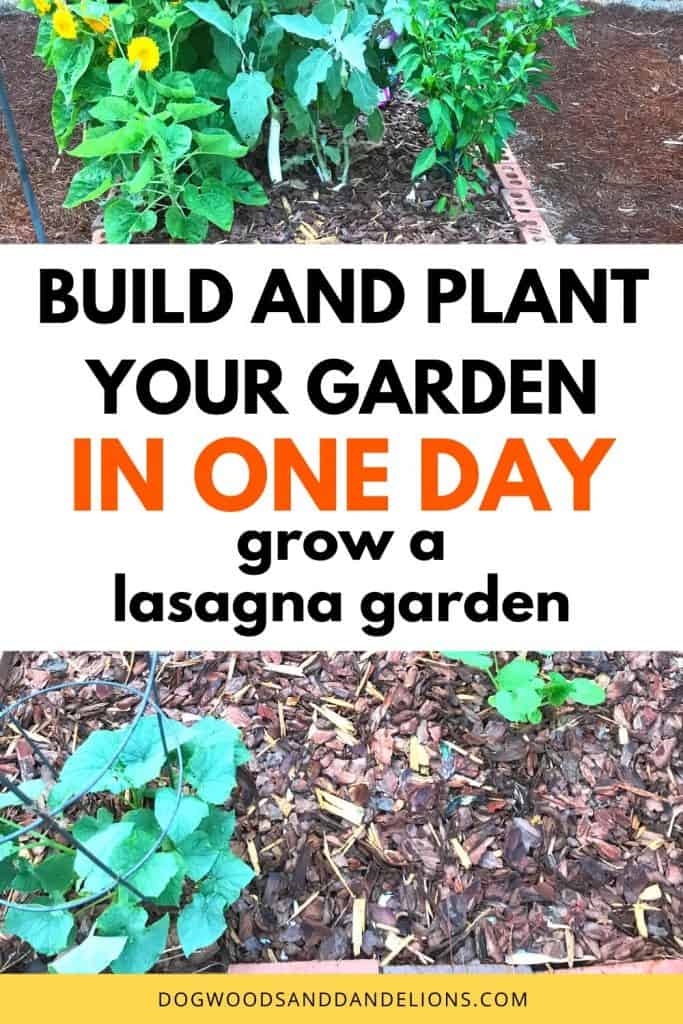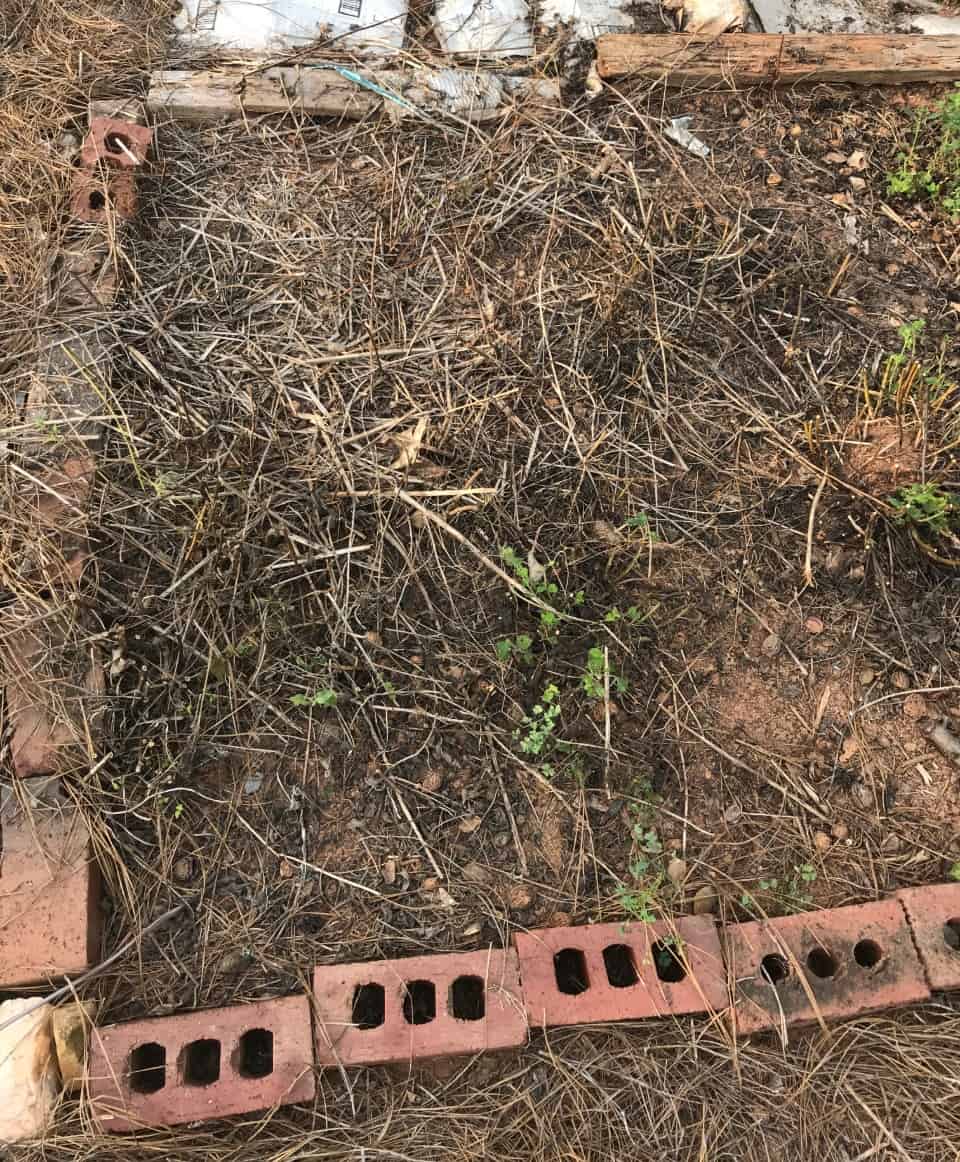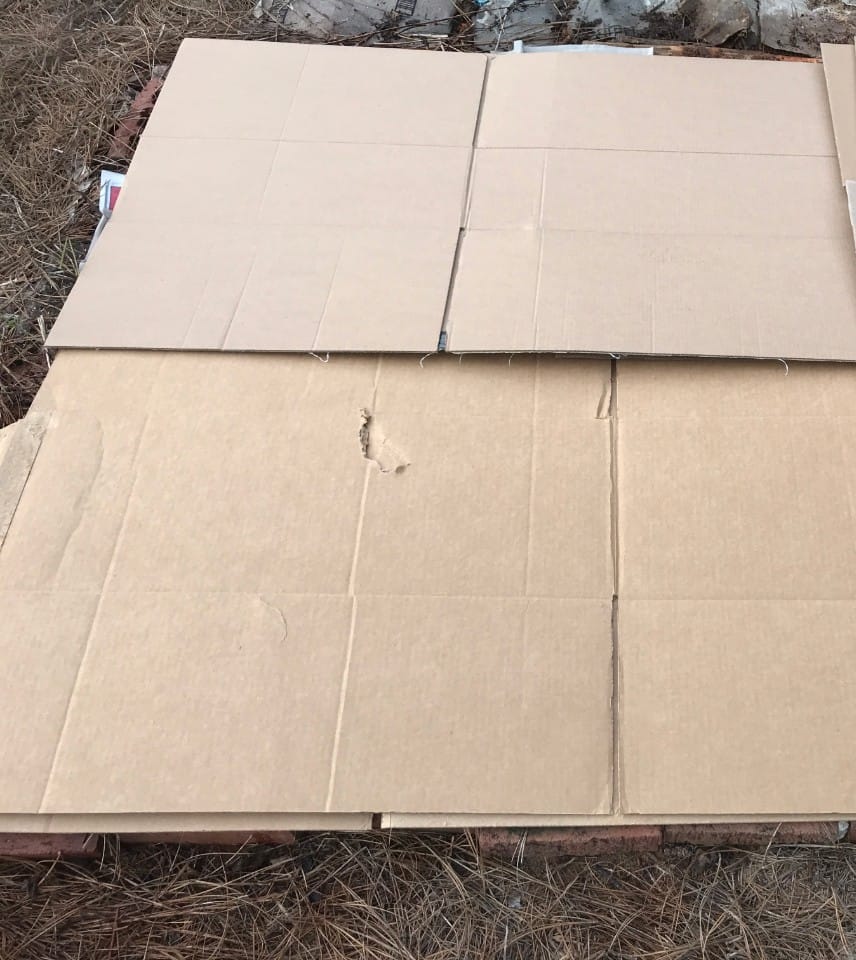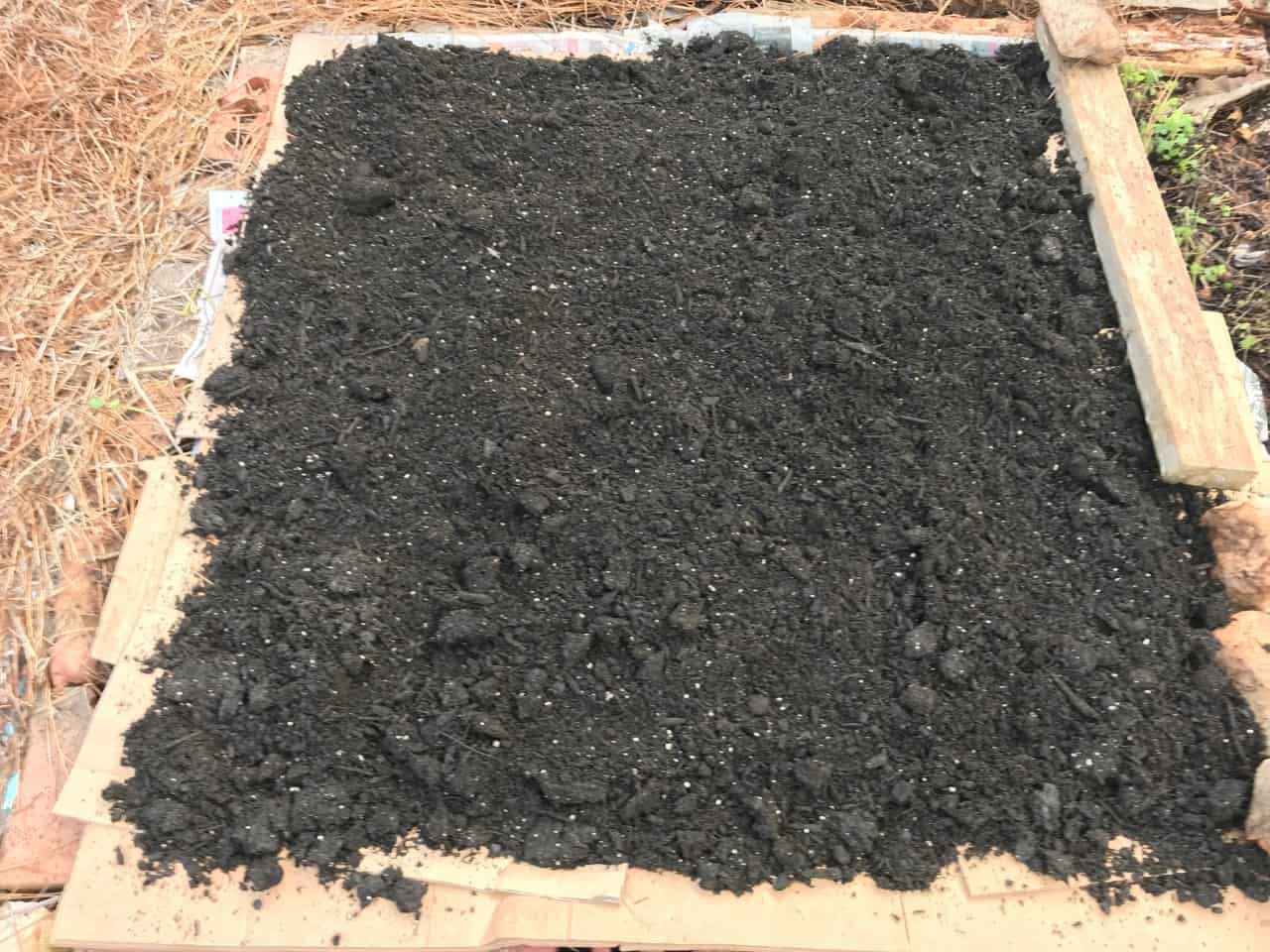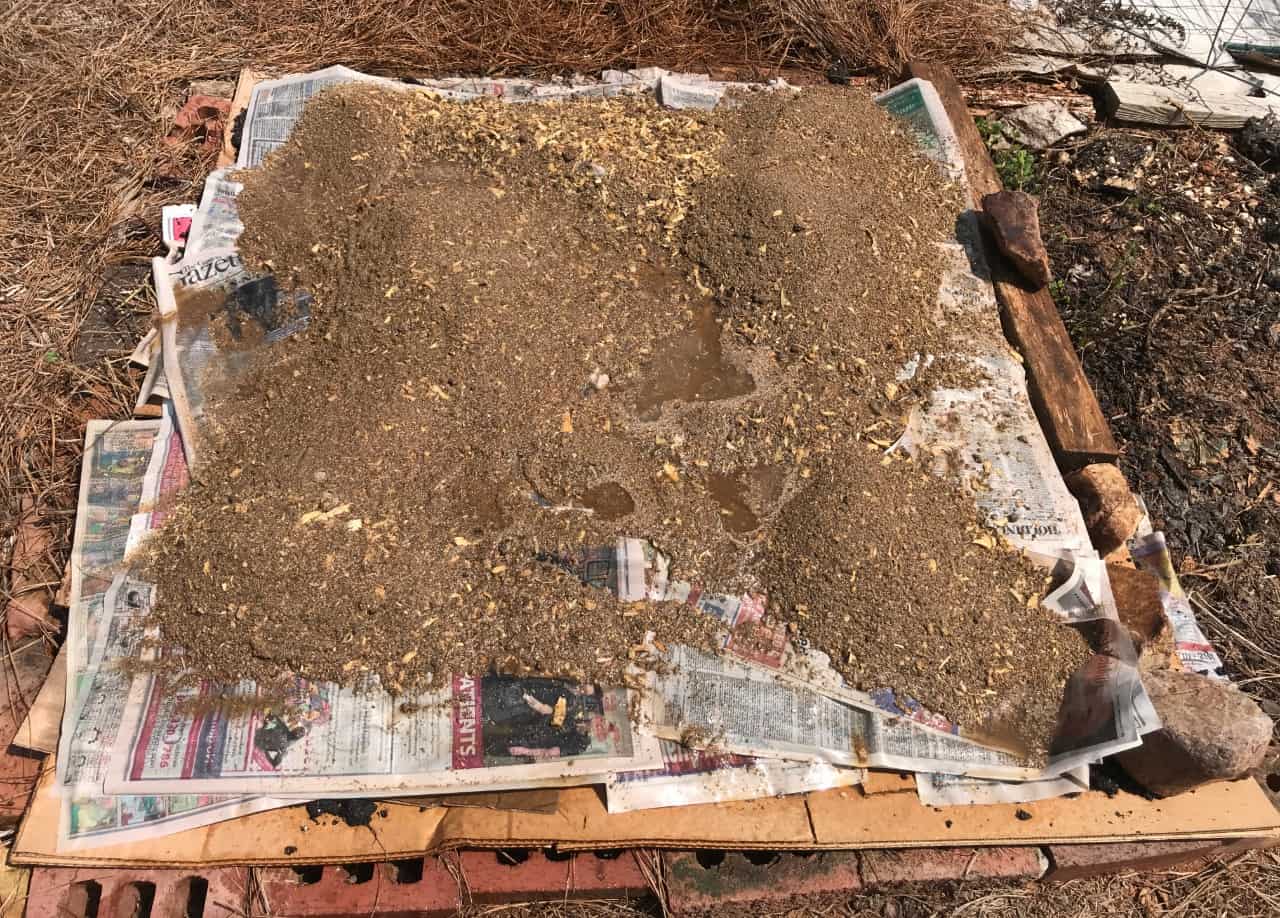Lasagna Gardening
Preview: Lasagna gardening is an easy way to start a new garden bed without much work. You can start layering materials now and plant in it immediately, or allow time for it to “cook” and plant next season.
Would like to have a garden bed ready for next year, but don’t have the foggiest idea about how to get started? What about if you want a new garden bed RIGHT NOW! Try “Lasagna” gardening.
No. I’m not talking about growing tomatoes, onions, and eggplant for a lasagna. (But if you want to grow a lasagna garden, you can do that too. I don’t have a plan for that (yet) but if you want a salsa garden, I’ve got you covered.?) What I’m talking about when I say Lasagna gardening is an easy method to build a garden bed without much work.
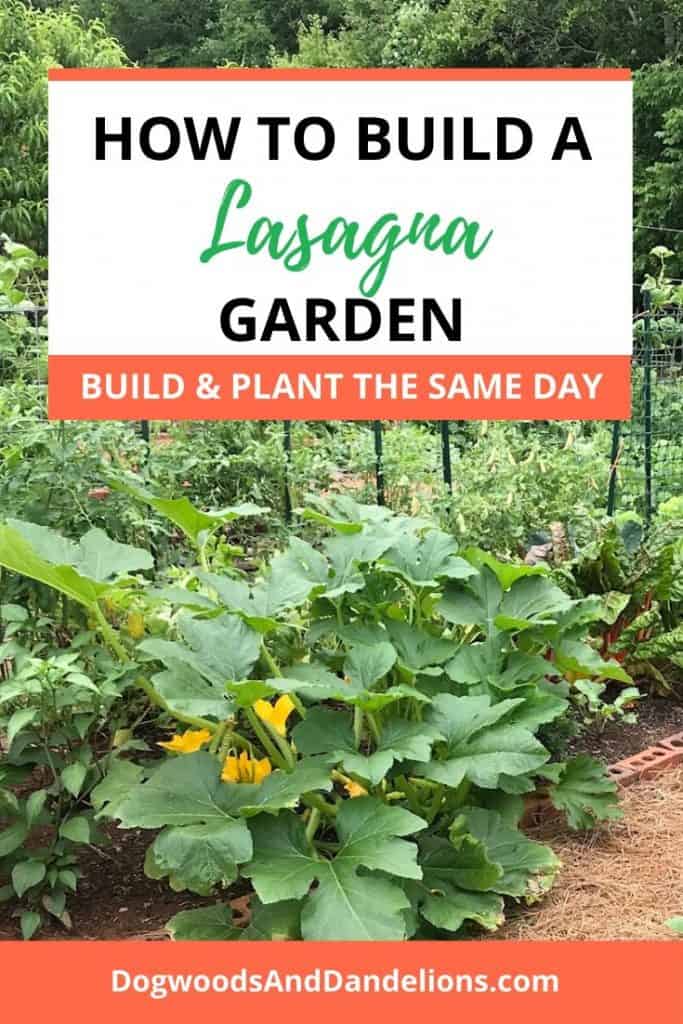
A quick note about the pictures in this post: I am in the process of building a new garden using the lasagna gardening method. My bed is NOT finished. I am working on adding layers as time allows.
Plus, I am trying to keep my costs down, so I am not going to complete the bed until I add plenty of layers of fall leaves. I will also add several layers of chicken manure as I go. However, for anyone wanting to build I new garden bed, I thought it was important to go ahead and publish this post NOW, so that you too can be working on building your garden.
What is Lasagna Gardening Anyway
If you’ve hung around here for any length of time, you know I am a huge fan of no-till gardening methods and raised beds. (Check out my posts on gardening with black plastic for another no-till method.)
I prefer to leave the eco-system undisturbed when gardening. Tilling destroys the pathways made by earthworms and destroys the worms themselves. Tilling can also bring deep seated weed to the surface where they will germinate instead of lying dormant. It’s a lot of work, it can be expensive to rent or buy a tiller, and running a tiller is very dangerous.
Lasagna gardening is an organic layering method that produces high quality soil and reduces the need to weed and water. You layer organic ingredients onto the area where you want a garden bed and allow the material to decompose. You wind up with rich soil that is wonderful to plant in. This method works for vegetable gardens, herb gardens, or flower gardens.
If you need a garden quickly, you can actually put down all the layers in one day and plant in your garden immediately. However allowing everything to “cook” or decompose will certainly make it easier to plant.
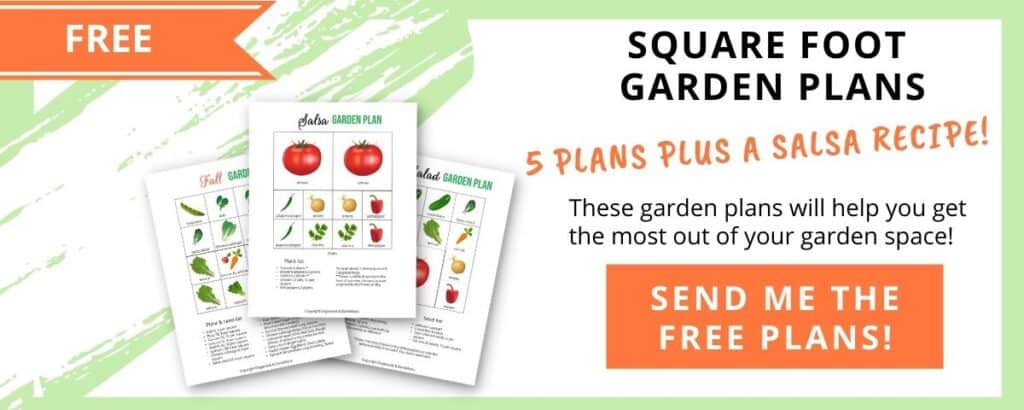
Affiliate Disclosure: Please note that some of the links in this article may be affiliate links and I may receive a small commission if you purchase something through a link. It will not change your cost. As an Amazon Associate, I earn from qualifying purchases. For more information, see my disclosures page.)
Benefits to Lasagna Gardening
There are numerous benefits to lasagna gardening, often called sheet mulching or sheet composting. The first benefit is that you don’t actually have to tear out the existing lawn to build your bed. By putting layers on top of the existing lawn, you will actually smother the weeds and grass that are already growing. So no, digging out the old lawn to put in a new bed.
Secondly, this method is a time saver because once you’ve smothered the weeds, you have very few that come up. Yes, you will have the occasional weed seed that blows in, but the loose dirt will allow you to pull it easily. This method holds water well, especially if you use mulch as a top layer, so you won’t have to water frequently either. After all, who really likes to weed and water?
Because you are building the soil up, instead of digging down, this is an ideal method for rocky soil or hard packed clay. Layering the organic materials on top means you don’t have to worry as much if you have poor soil. (Though it still never hurts to do a soil test.) So you can have a great garden, even if your dirt is less than perfect.
This method is FAST. You can build your garden and plant your garden the same day! Lasagna gardening works great for raised beds and is ideal if using the square foot gardening technique. I’ve got lots of garden plans in my Resource Library if you need inspiration. You can get the password by subscribing here.
Ingredients for a Successful Lasagna Garden Bed
There are many ingredients you can use to make a successful lasagna garden bed. I recommend using what is locally available to you.
- shredded leaves
- weed-free grass clippings
- newspapers (no glossy pages)
- cardboard (remove all stickers and tape)
- coffee grounds
- vegetable peelings
- sawdust
- straw
- wood ashes (but not too many)
- compost
- peat moss
- animal manure
- garden soil
You will notice that many of these items are items you can add to your backyard compost pile too. Some people also recommend using hay, but unless you want to do battle with weeds all season, I suggest steering clear of hay.
You can build your garden all at one time if you gather enough materials or you can add to it as you collect items. The fall is a perfect time to start a lasagna garden because as you rake or bag the fallen leaves, you can add them in layers to your garden bed.
Get to Layering
Since this method works on any type of garden, you can build your bed anywhere. However, if you want to grow vegetables or flowers that need sunlight, it is best to find an area that receives at least 8 hours of sun each day, though 10 or more is preferred.
The key to a successful lasagna garden is not to make one thick layer of each ingredient. It is actually better to make several thinner layers of the organic materials, especially leaves. Leaves tend to pack down and won’t deteriorate as quickly if they are in a thick layer.
As you are layering the ingredients, be sure to water each layer thoroughly. These types of beds hold water beautifully, but that also means it can be difficult to get water to the bottom layer if you pile a bunch of dry organic material on top.
To start my garden bed, I prefer to layer a thick section of wet newspaper down first, followed by some cardboard. (This is great use of all those Amazon boxes! Just remove all labels and tape first.) Putting this layer down helps to smother any weeds.
After layering with newspapers and cardboard, I start with any of the other ingredients I have on hand. There is no specific order to layer the items, but starting with newspaper or cardboard will mean less weeding. As a bonus, earthworms seem to love hanging out under the newspaper and cardboard.
Ideally, you want to build your bed 18-24″ high with organic matter. You can do this all at one time, or over the course of a few weeks. I’m holding off on finishing mine until I get those fall leaves.

Building Your Bed for Planting Now
The great thing about using this layering method is you can build your bed and plant it the same day. To use it immediately, I recommend using garden soil for the top 6 ” of your bed. If you are planting any kind of root crop or greens (lettuce, kale, spinach, etc.) immediately after building your bed, be sure your manure is composted, not fresh from the coop or cow.
How to Let Your Bed “Cook”
To “cook” a garden bed means to speed up the method of decomposition of the ingredients. If you aren’t going to use your bed immediately, you can let it sit for a season and it will naturally start to break down the materials into nutrient rich soil. If you want to speed up the “cooking process”, you can cover the bed with black plastic. The sun on the plastic will heat up the layers and help your bed decompose faster.
Your Questions
I’ve shared the gist of making a lasagna garden. For more information, check out the book Lasagna Gardening by Patricia Lanza or her more recent book, Lasagna Gardening for Small Spaces: A Layering System for Big Results in Small Gardens and Containers. What questions do you have about this method? I would love to answer them for you. Just leave a comment below.
